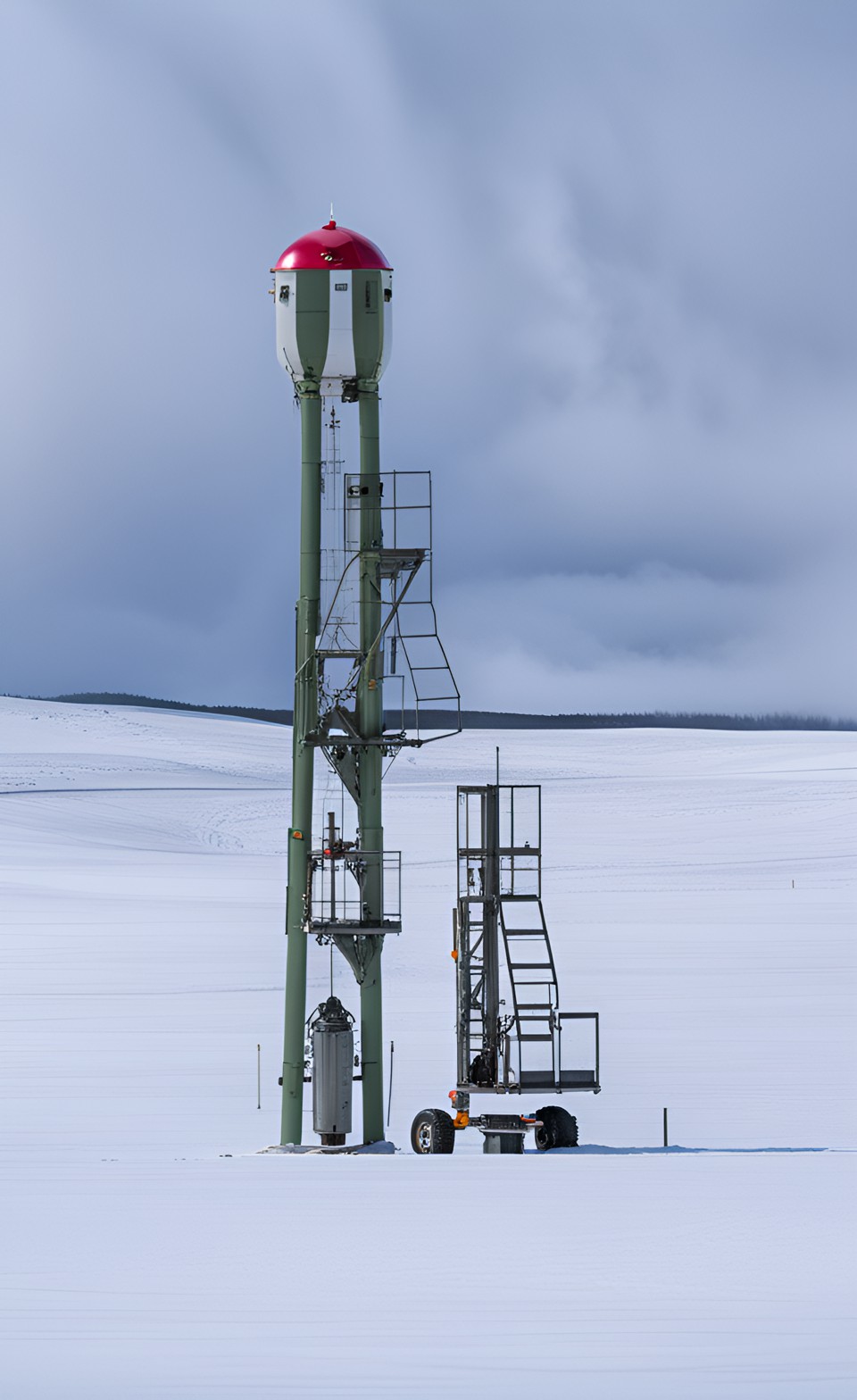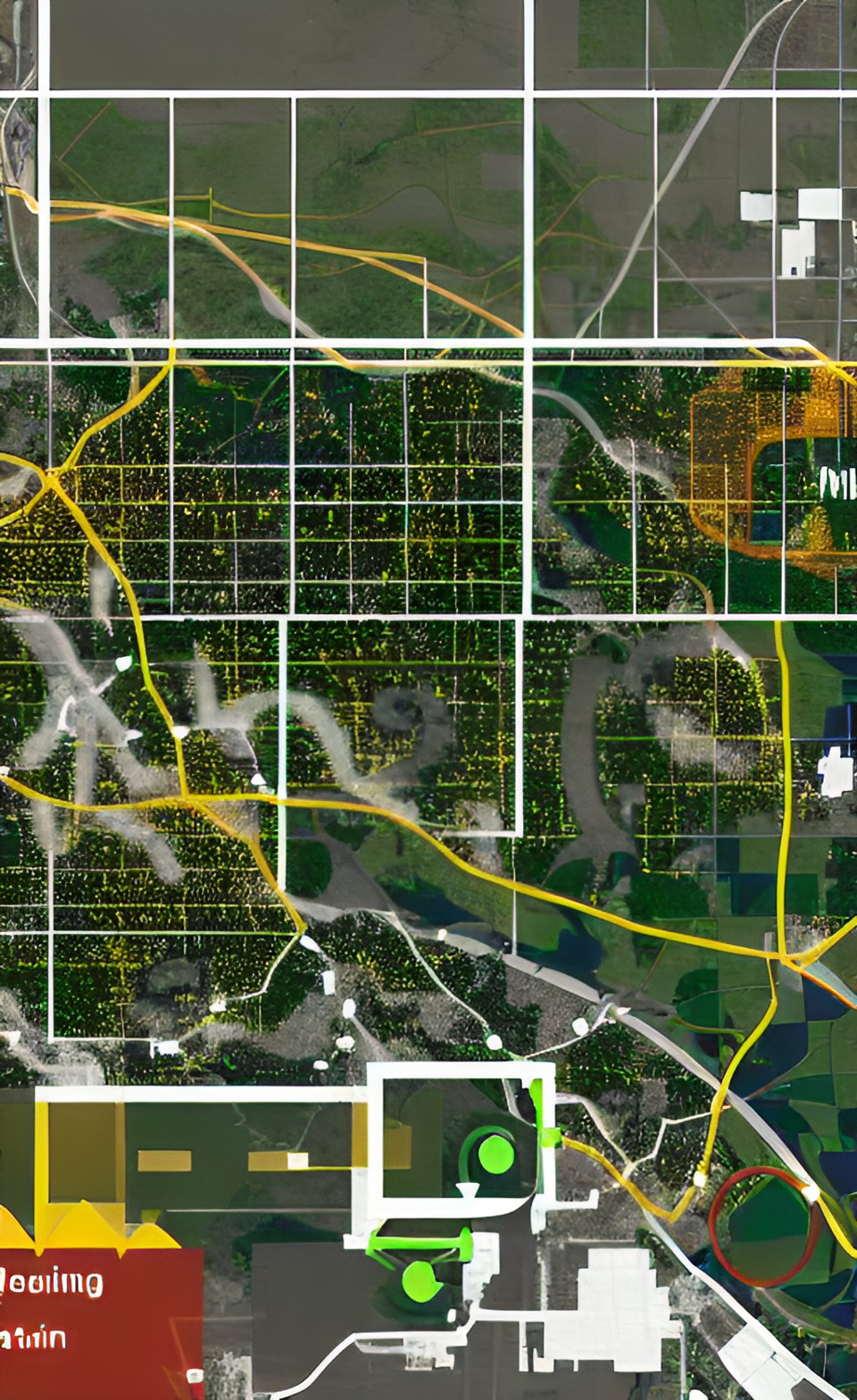- Air Homepage
- Alberta Air Quality
- Ambient Air Quality Monitoring Equipment
Ambient Air Quality Monitoring Equipment Siting Guidelines
If you are in charge of ambient air quality monitoring equipment, there are a lot of reasons you might be interested in this part of the Air Monitoring Directive (AMD). Especially if you need to:
- Establish or maintain air monitoring systems with expert guidance on equipment placement, data collection, and regulatory compliance,
- Gain insight into compliance requirements and guidelines,
- Find high-quality data that is crucial to public health and environmental protection,
- Stay with industry advancements and ensure precise monitoring for your professionals in environmental monitoring,
- Place monitoring equipment efficiently and cost-effectively to improve data collection,
- Minimize interference, ensure accurate data collection, and support environmentally friendly practices, or
- Place equipment correctly to ensure data accuracy and minimize pollution, safety, and public health risks.
AMD Blueprint: Precision Air Monitoring Equipment Siting - For your air quality monitor to be legally compliant, what angle, height, and distance from the nearest tree do you need? Don't waste time and money on biased data; unlock the rules for putting every air quality sensor, wind instrument, and sampler.
These questions ensure that air quality monitoring systems are effective and comply with regulations:
- What is the Air Monitoring Directive (AMD)?
- What's new with AMD amendments?
- Where's the best place to put air monitoring equipment?
- Siting criteria for air monitoring equipment?
- What's the deal with continuous ambient air monitoring?
- What's the best place for wind instruments?
- What's the best way to position passive and intermittent samplers?
- Precipitation sampling sites?
Section 1 - Purpose of this Chapter
This document, part of Alberta's Air Monitoring Directive (AMD), lays out where ambient air quality monitoring equipment should be located and what equipment they should use. There's a chapter called Site Selection.
 Revisions to the Scientific Monitoring Equipment Rules
Revisions to the Scientific Monitoring Equipment RulesBasically, it's about deciding where to put these stations and how they should work. This chapter's rules have to be followed by September 23, 2015. It's part of a bigger set of rules for monitoring air quality.
1.1 Amendments
- The document has been updated and changed. A few things changed, like changing "precipitation sampler" to "precipitation sampling equipment."A couple of siting guidelines were adjusted, like moving the angle from 30° to 26°.
- The elevation angle for passive samplers was lowered and some criteria were removed.
- There's now another section for precipitation sampling requirements.
- Cable burying requirements were removed, and ground-fault circuit interrupters were changed to conform to Alberta Electrical Code.
- Due to the removal of SS 3-C, the clause numbering in Section 3.0 has been adjusted.
- Traps and filters had to be installed differently.
- Continuous ambient air monitoring station and network documentation requirements were clarified.
- Cross-references were fixed, and certain map and sketch requirements were removed.
Updates aim to make the document more current and better.
Section 2 - Ambient Air Quality Monitoring Equipment Site Selection and Siting Criteria
2.1 Site selection
Here's how to choose where to put air monitoring stations, samplers, and sensors. The person in charge has to follow the guidelines in the Air Monitoring Directive (AMD) when placing these devices.
To find a general location for industrial sites, they should use dispersion modeling. To set up the final location, they need to follow the detailed requirements in the Site Selection Chapter. Dispersion modeling is a must for new facilities that need approval, unless the Director says otherwise.
The person in charge must get the director's written permission before putting any of these monitoring tools in place and sharing data with them. Industrial operations can get this authorization as part of their overall approval process.
2.2 Standard Siting Criteria
Site selection for air monitoring involves some additional considerations beyond what's discussed in the Site Selection Chapter. A good location should be accessible year-round under normal weather conditions and have utilities and security measures to prevent vandalism. It's important to make sure trees and fences don't block airflow around the ambient air quality monitoring equipment or you'll get biased results.
Consider factors like inlet height, length, distance from airflow disruptions, and proximity to roads when placing sample inlets. It's best to avoid sites that get a lot of downwash or ground dust, like stacks or unpaved roads. The sample inlet should be elevated or placed at a safe distance from the dust source to maintain accuracy.
 Data collection at precise locations
Data collection at precise locations2.3 Continuous Ambient Air Monitoring Siting Criteria
If the Director doesn't specify otherwise, specific criteria must be followed when placing continuous ambient air monitoring equipment. It's important to keep the equipment at least 20 meters away from trees, make sure air flow is unobstructed in most wind directions, and avoid obstacles like buildings.
The angle between the equipment and any obstacle should be no more than 26.5°. There are also distance requirements from roads based on average daily traffic. The use of portable generators is discouraged, but if necessary, the exhaust from the generators should be positioned at least 30 meters downwind from the monitoring equipment's air intake. Based on the type of pollutant and other requirements, Table 1 specifies criteria for locating continuous ambient air monitoring sampling inlets.
Table 2 sets minimum distances for roadways based on average daily traffic volume. By following these guidelines, monitoring stations will collect accurate data while minimizing interference from nearby elements like trees, buildings, and roads.
2.3.1 Siting of Wind Instruments
It's important to follow certain criteria when positioning wind measurement instruments. Table 3 and Figure 2 detail these criteria. It's best to place wind instruments at least 10 meters above the shelter's height. In addition, the area within a 100-meter radius must have a uniform landscape and be free of obstacles. It's also possible to position the instruments at a distance greater than 10 times the height of the obstacle.
Magnetic compasses work well for wind direction measurement, but more precise methods are available, such as using survey benchmarks or the Local Apparent Noon procedure described in Appendix A, which ensures accurate wind direction measurement. To make wind data collection reliable for monitoring, follow these guidelines.
2.4 Passive and Intermittent Sampler Siting Criteria
There are guidelines for where to place passive and intermittent air quality samplers, which measure the concentration of substances in the air over time, like daily or monthly. The passive samplers should be located according to the criteria in Table 4, usually 1.5 to 4 meters above the ground and at certain angles. It's best to have duplicate samplers within 4 meters of each other.
On the other hand, intermittent samplers have different criteria (Table 5). The height should be at least 2 meters, but no more than 15 meters. As well as being positioned at a certain distance from obstacles and other samplers, they should also have unrestricted airflow in specific wind quadrants.
It's important to follow these guidelines for accurate and consistent air quality monitoring.
2.5 Precipitation Sampling Equipment Siting Criteria
When you're setting up rain or snow measuring equipment, and you're also continuously measuring gases and particles in the air, placing them can cause conflicts. It's best to have a clear space with three sides and put the continuous analyzers where the wind blows the most. Chapter 4 of the AMD has more details on how to do this.
2.5.1 Siting of Precipitation Sampling Equipment
Follow these guidelines when positioning ambient air quality monitoring equipment to collect precipitation (like rain or snow):
- Set the collection opening between 1.0 and 3.0 meters up.
- Put it on a flat surface.
- Keep it at least 2.5 times higher than any obstruction.
- Make sure it's at least 5 meters away from surfaces like concrete.
- Make sure the open space isn't more than 10 times the height of nearby trees.
- Mount it so the precipitation entry point is 1 meter above accumulated snow.
- Make sure the chassis is facing east-west.
- Connect it to a 15 amp power supply that's shared with a rain gauge.
These rules make sure precipitation sampling is accurate and consistent. Here's a visual representation of these guidelines in Figure 4.
2.5.2 Siting of Background Precipitation Sampling Equipment
For equipment that collects precipitation, Alberta uses the Canadian Air and Precipitation Monitoring Network (CAPMoN) criteria. Both air pollution and precipitation are studied by CAPMoN.
Table 6 makes sure that these sites represent the region's topography, air flow patterns, and precipitation characteristics while avoiding local pollution sources. There are distances from pollution sources, population centers, water bodies, transportation routes, and on-site obstructions in the text. These criteria help collect unbiased air and precipitation quality data. Figure 4 and Section 2.5.1 of the Site Selection Chapter have more details.
See the Complete Chapter 3 pdf for more info and to access the complete guidelines.
Please contact Barry at...

...for more about AMD compliance. Calvin Consulting Group Ltd. is a leader in air quality, dedicated to advancing industry standards and providing valuable resources to enhance environmental monitoring.
Choosing the right locations for air monitoring stations, samplers, and sensors: Mastering the Art of Air Monitoring Equipment Placement:
Essential Guidelines gives you comprehensive tips.
In Alberta's Air Monitoring Directive (AMD), these guidelines help industries and organizations decide where and how to deploy monitoring devices. When these tools are placed properly, accurate data can be collected while minimizing interference from nearby elements like trees, buildings, and roads.
The guidelines recommend selecting accessible, year-round locations with secure utilities and preventive security measures. Airflow obstruction, sample inlet height, and dust sources are also taken into account. The placement of the precipitation sampling equipment is explained in detail, ensuring that rain or snow data are collected unbiasedly.
The latest amendments to this document promise to advance air quality monitoring and facilitate industry compliance. The updated and enhanced guidelines ensure accurate, consistent, and reliable air quality data.
Air Monitoring Equipment Placement Guidelines: Unlocking the Power of Precision
Do you have concerns about air pollution in your area??
Perhaps modelling air pollution will provide the answers to your question.
That is what I do on a full-time basis. Find out if it is necessary for your project.
Have your Say...
on the StuffintheAir facebook page
Other topics listed in these guides:
The Stuff-in-the-Air Site Map
And,
Thank you to my research and writing assistants, ChatGPT and WordTune, as well as Wombo and others for the images.
OpenAI's large-scale language generation model (and others provided by Google and Meta), helped generate this text. As soon as draft language is generated, the author reviews, edits, and revises it to their own liking and is responsible for the content.



New! Comments
Do you like what you see here? Please let us know in the box below.